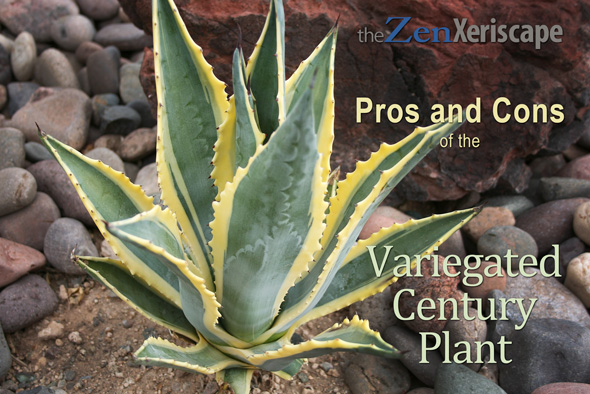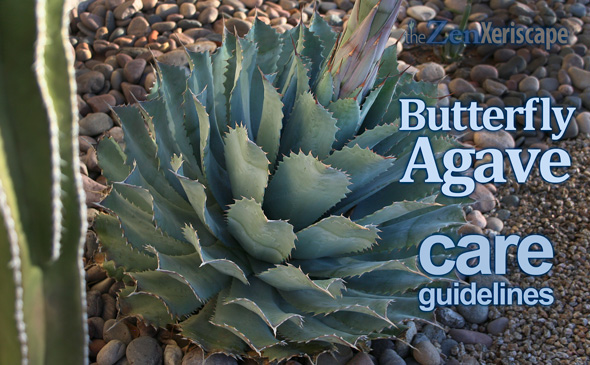Weber’s agave (Agave weberi) is one of my favorite succulents growing in my xeriscape. It has lovely blue-green leaves that undulate with a beckoning wave-like design. But, is this attractive agave the right choice for your xeriscape? Read the Weber’s agave pros and cons to make an informed decision.

and will work well in any arid landscape.
Photo by Doug Martin
My experiences with Weber’s agave
Years ago, I bought two small Weber’s agaves at a local big-box DIY garden center. After planting them, they quickly grew.
Soon, they were making pups, and some appeared over four feet away from the parent plant! To encourage more growth, I watered them every week (too much)!
Then, the 2024 heat wave hit southern Arizona and the southwestern United States. Unfortunately, they were showing stress from the heat, and even more unfortunately, I watered even more!
In fact, I probably killed them with too much love and too much water. They quickly rotted and there was nothing I could do to save them.
Luckily, many of the pups were still alive. I left them grow where they were, and did not give them any supplemental water. So, at least I still had the pups. Throughout the seasons, they have grown, but at a slower pace because I’m not watering them.
Now, for the pros and cons of the Weber’s agave…
Weber’s agave pros and cons
PROS
Dramatic display:
Unlike many agaves, the Weber’s agave has curved leaves. Those curves, or waves, remind me of the gentle waves you’d see on a pond. That characteristic, coupled with its blue-green hues, really attract my attention.
The leaves emerge from a rosette at the center of the plant, and as they emerge and grow, they undulate. I love it!
In addition, this agave can get large–about 6-to-8 feet tall and wide, so it can be a dramatic focal point in your landscape.
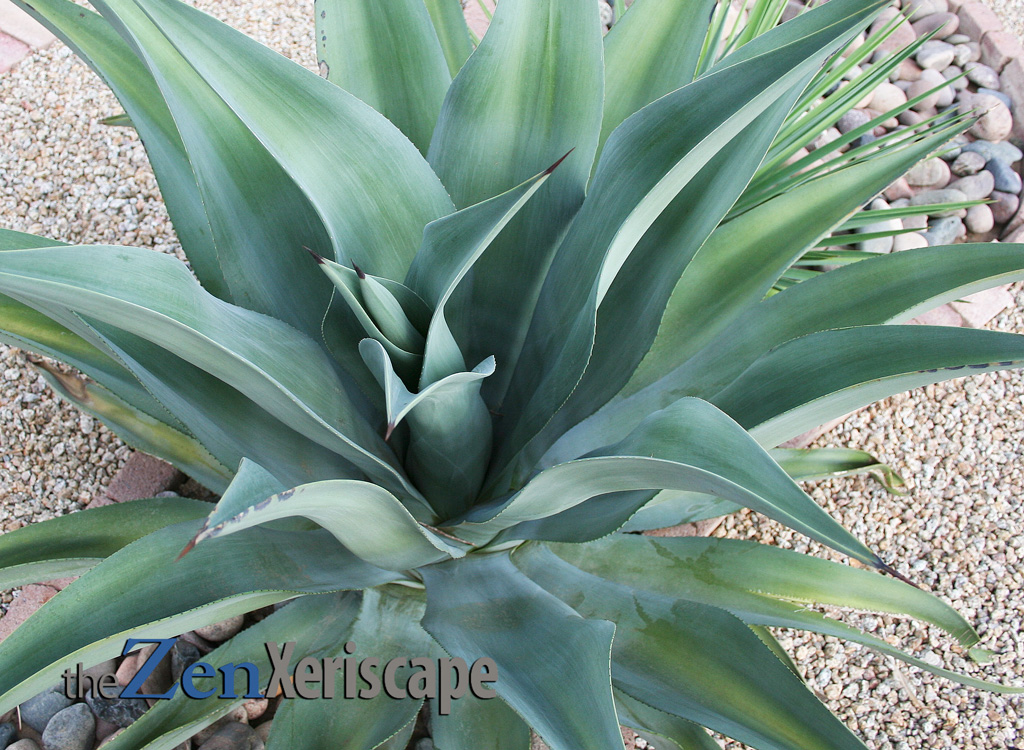
that emerge from the center of the plant.
Photo by Doug Martin
Tolerant of hot and cold extremes:
In general, the Weber’s agave is heat-tolerant. However, it can look stressed when the desert temperatures reach 120 degrees fahrenheit. But, they should survive (as long as you don’t make the mistake of watering them too much, like I did in the past).
Also, the Weber’s agave can tolerate below-freezing temperatures of about 15 degrees F or less, at least for short periods. It generally thrives outdoors in USDA hardiness zones of 8-to-11.
Fantastic container plant:
Most agaves make good container plants, and the Weber’s agave is no exception. It will survive with little supplemental water. And, if you use a smaller container, you can move it around in your landscape, or bring it inside when the temperatures are too extreme.
Best of all, this agave, with its uniquely undulating leaves, would attract lots of admiring attention from the neighbors.
Low maintenance:
I’ve learned that most agaves, especially this Webril’s agave, should not be given much supplemental water. If you do water at all, be sure no moisture ponds around its base.
The only task might be to prune dead, dried-up leaves from around the base. That’s what I do with all my agaves. With a pruning saw, the job goes fast.
Propagates easily with pups:
I have harvested a lot of pups that popped up in the vicinity of this agave. Some pups appeared more than four feet away from the parent, while others stayed closer.
Use a garden trowel and gently dig around the pup. Then, you should be able to pry, twist, or lift it up with its roots intact. Then replant it in your landscape.
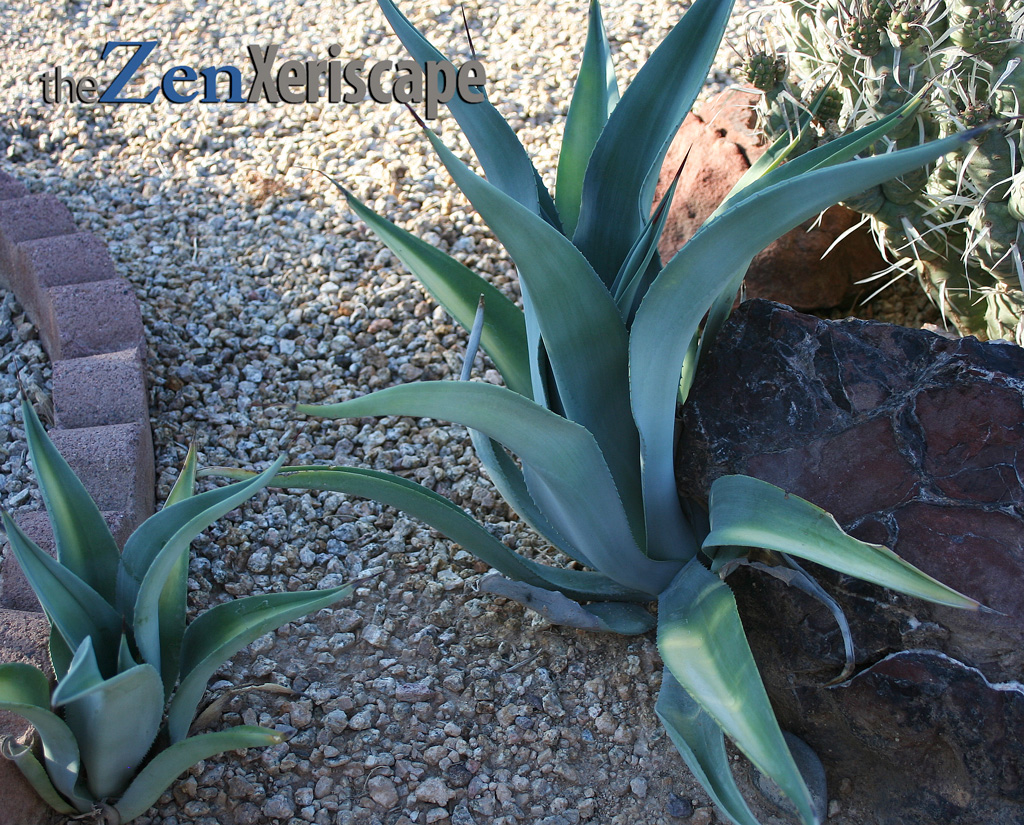
over 4-feet away from the parent.
I’m letting them grow there,
but you can dig up and replant the pups elsewhere.
Photo by Doug Martin
Rabbit resistant:
The terminal spines (spines on the side of the leaf), as well as the very sharp leaf-end spines, help make this tough agave rabbit and possibly deer resistant.
While the terminal spines are not as large as those on the variegated century plant, they are sharp and are a deterrent to rabbits.
Weber’s agave pros and cons
CONS
Susceptible to root rot:
If over-watered, this agave is highly susceptible to root rot. If you do give it supplemental water, be sure not to let water pond around the base of the agave.
Shows stress from extreme heat:
While it prefers full sun, my Weber’s agaves here in southern Arizona do show stress from the summer heat. Their older leaves can turn partly yellow.
If you also live in regions that receive extremely hot temperatures in the summer, plant this agave where it receives some afternoon shade. Otherwise, plant it in full-sun.
Prone to pest damage:
This agave might suffer damage or death from the agave snout weevil. I’ve had these creatures in my Weber’s agaves.
The sneaky weevils tunneled into my agaves where they ate and propagated. By the time you notice that your agave is suffering from this pest, it will probably be too late to save it.
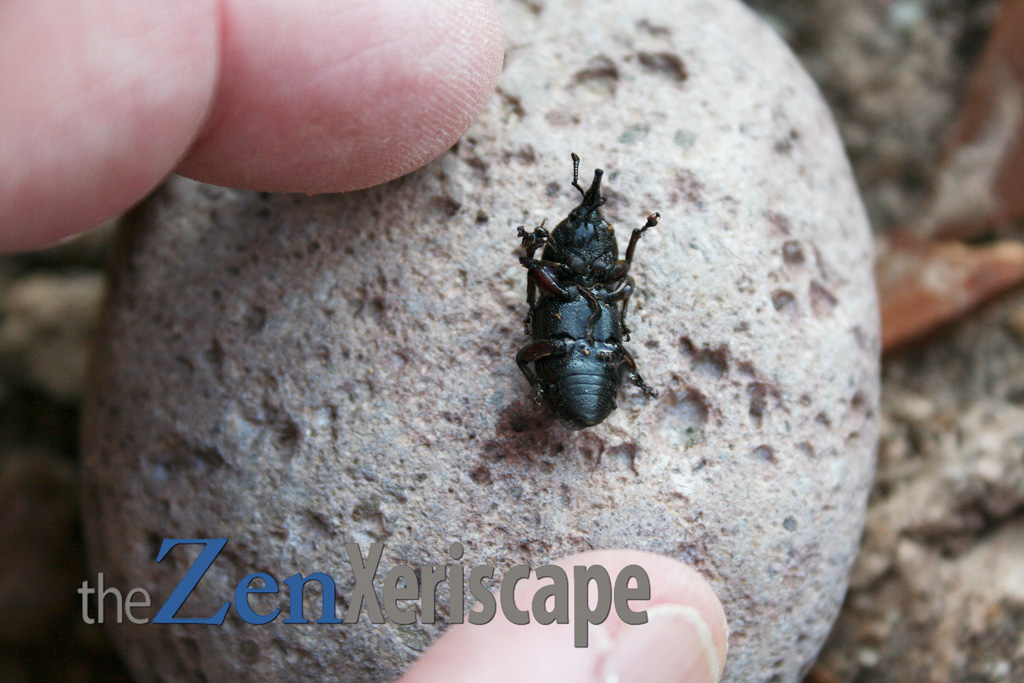
inside my Weber’s agave!
Unfortunately, my Weber’s agave did not survive.
Photo by Doug Martin
Can get massive (eventually):
For me, its potentially large size would make it a spectacular focal point. But, it can get up to 6-to-8 feet tall and wide, and that can be entirely too much agave for many landscapes!
Fortunately, it does grow slowly, at least if you don’t water or fertilize too much. In fact, I don’t irrigate or fertilize this agave at all.
After flowering, this agave dies:
It sounds sad, but after sending up a magnificent flower spike, this agave will die (just like all agaves). Fortunately, it is a prolific propagator, so there should be lots of pups that continue the cycle of life.
Let them grow where they are, or replant them to expand your xeriscape.
Get Prime! (As an Amazon Associate, I earn a commission from qualifying purchases.)
Takeaways:
Weber’s agave pros and cons
The Weber’s agave can be a tricky plant to care for in your landscape. However, I’ve found that if I don’t over-water, it performs well and looks great in an arid landscape.
In fact, this agave is one of my favorites, mostly because of its blue-green hues and its leave that have a curvy undulation as it grows. It’s really a unique-looking agave. I think you’d love a few in your landscape or containers, too!
Content and photos by Doug Martin and The Zen Xeriscape


